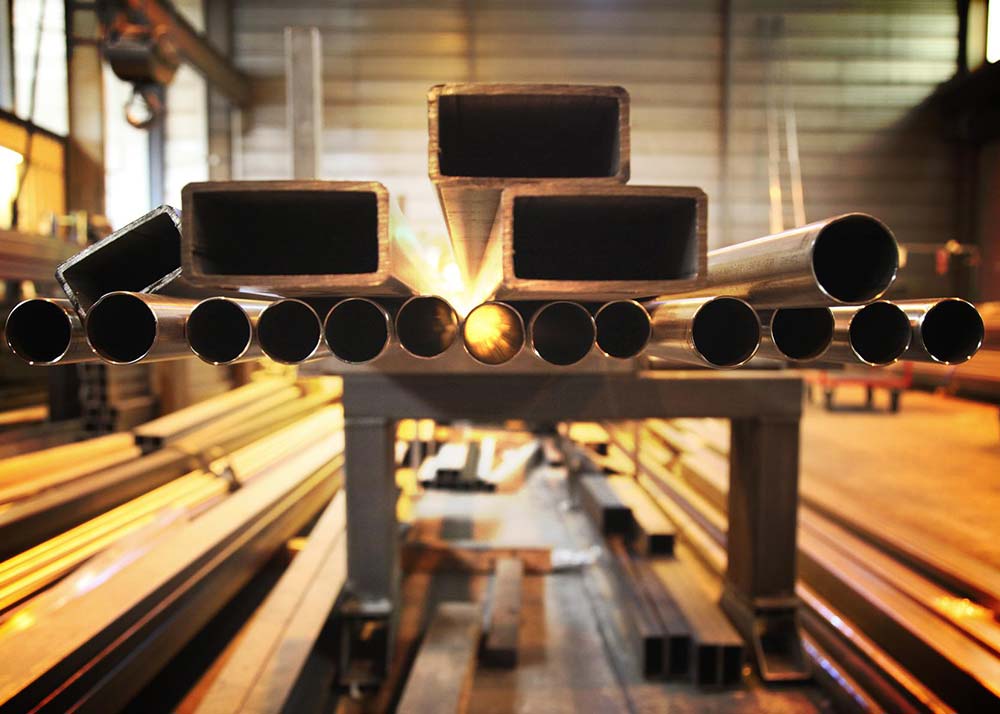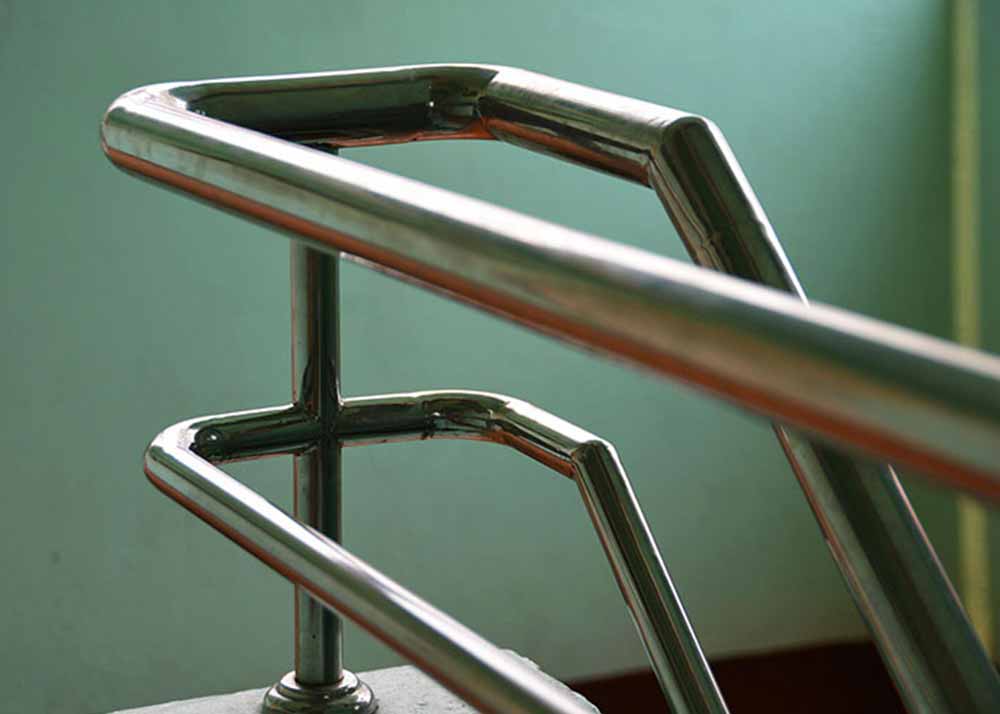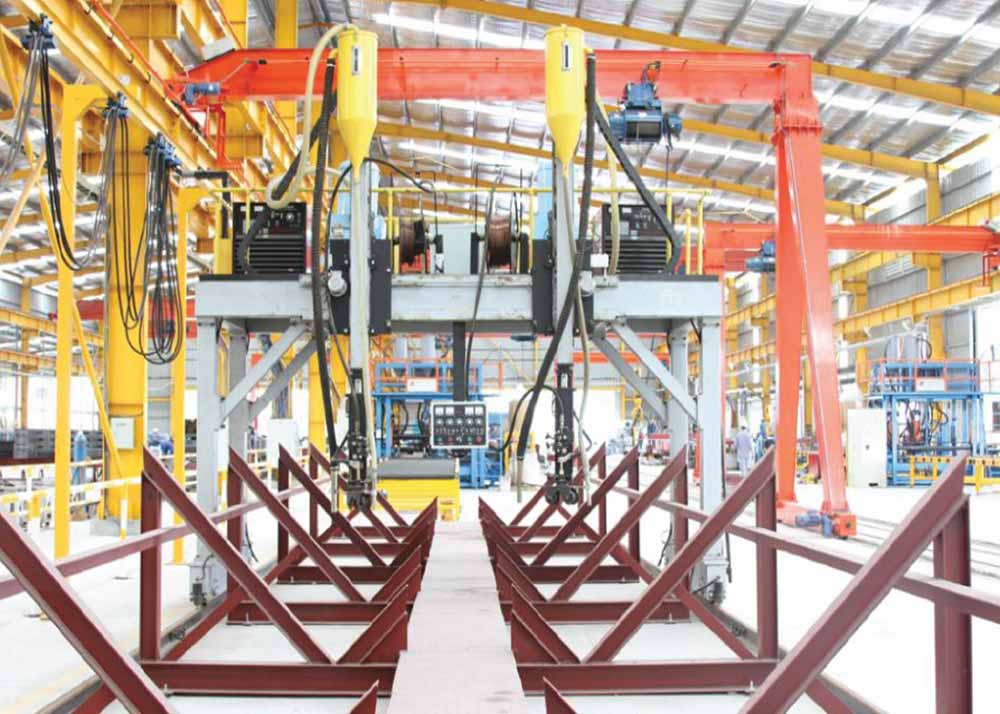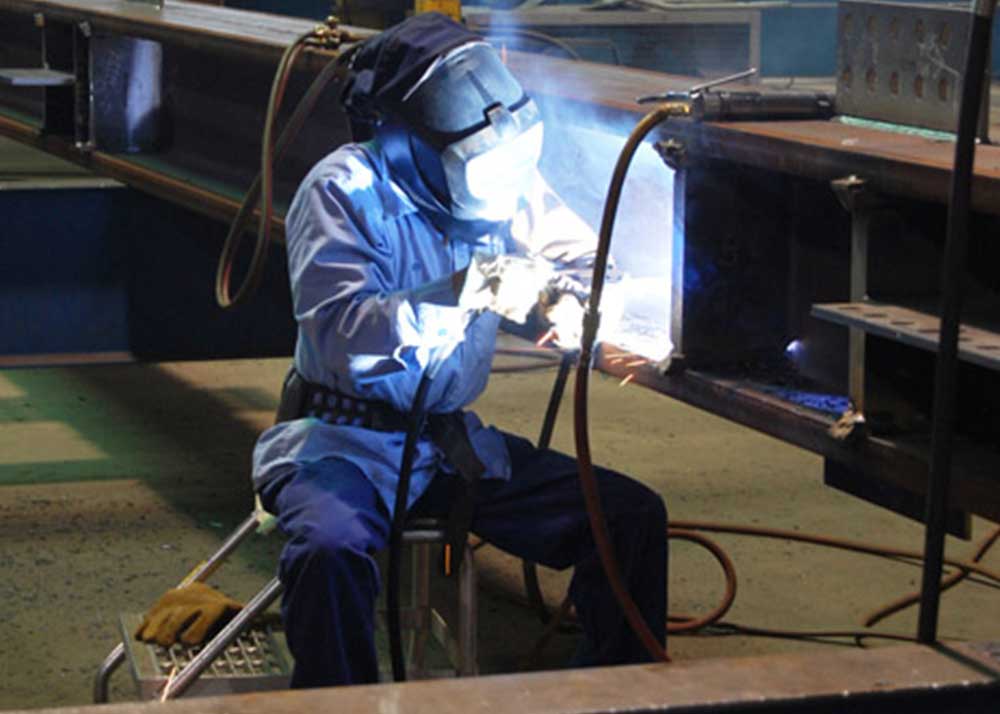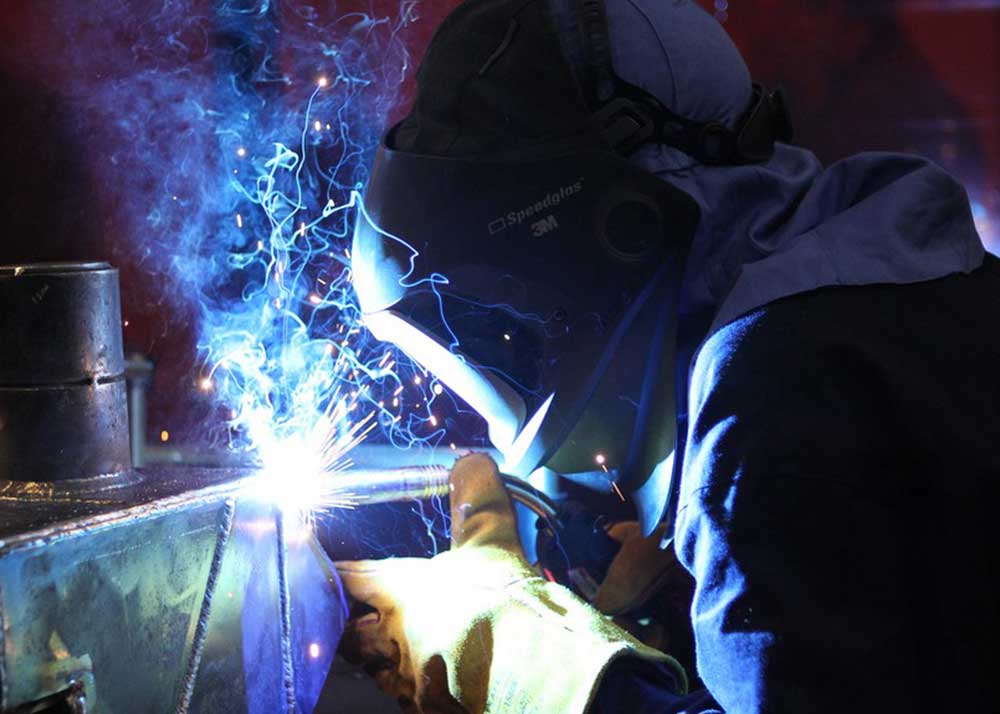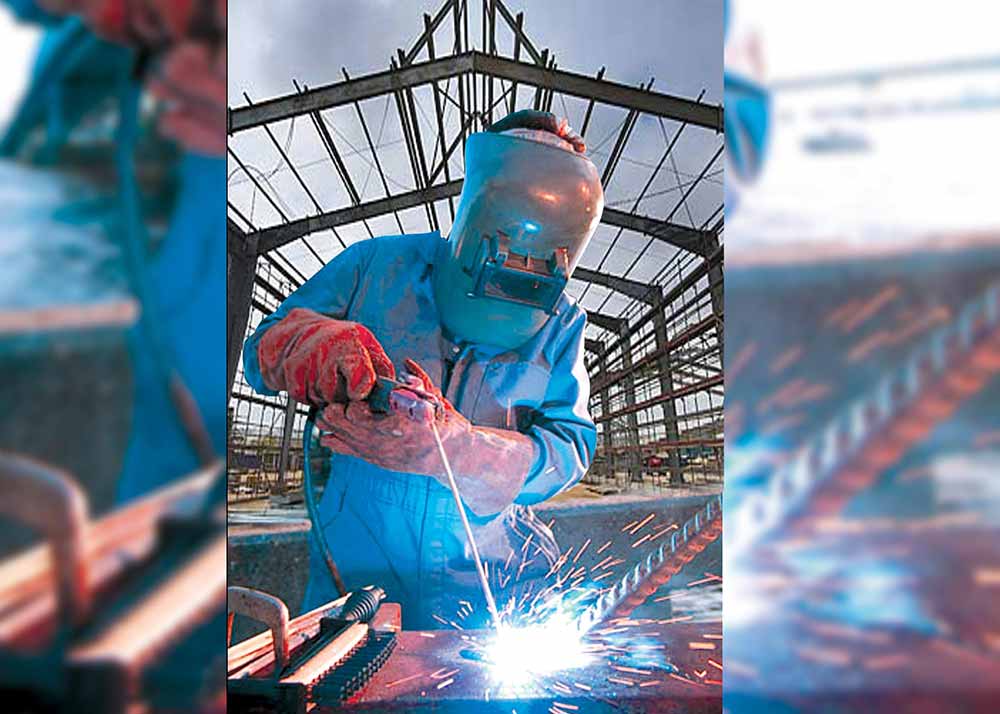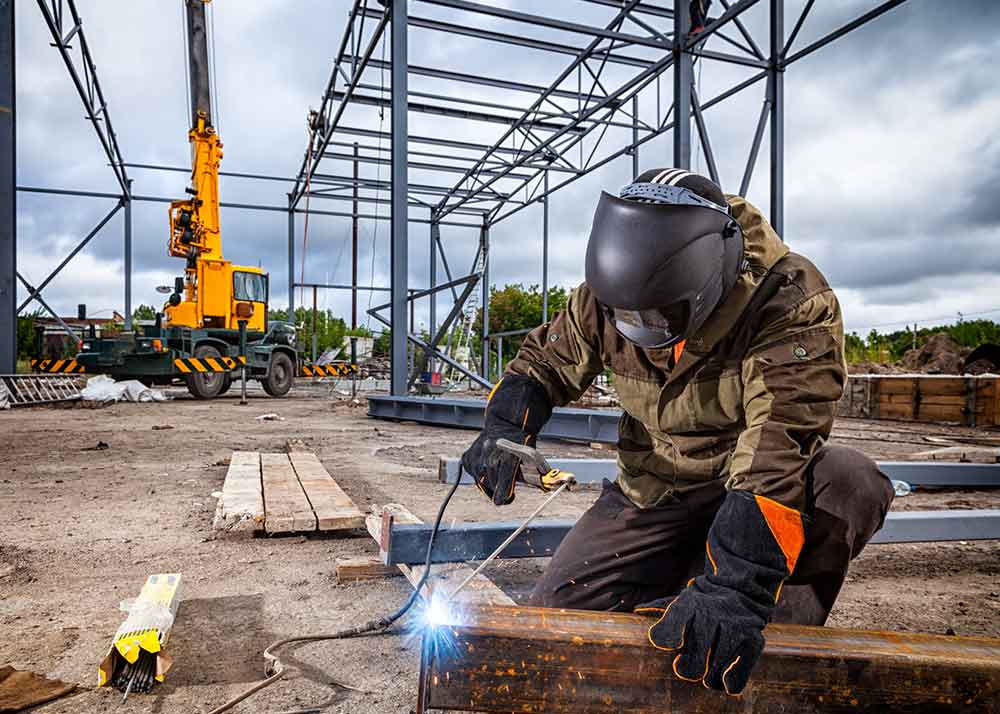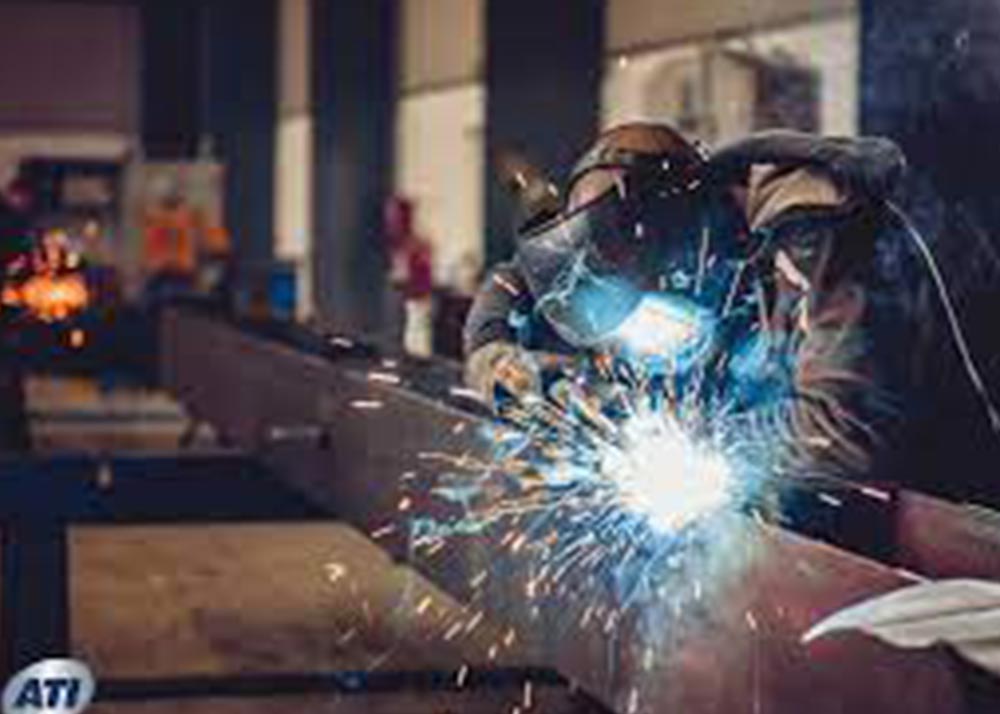Steel Fabrication
Steel Fabrication is the process of cutting, bending, shaping, and assembling steel components to create structures, machinery, or parts. It involves transforming raw steel materials into finished products through various techniques such as welding, machining, and assembly. Steel fabrication is widely used in industries like construction, automotive, aerospace, manufacturing, and infrastructure. Below is a detailed overview of steel fabrication, including its processes, techniques, applications, and benefits.
Key Processes in Steel Fabrication
Cutting:
- Shearing: Using shear machines to cut steel sheets or plates.
- Laser Cutting: High-precision cutting using laser beams.
- Plasma Cutting: Using a plasma torch to cut through thick steel.
- Waterjet Cutting: Cutting steel using high-pressure water mixed with abrasives.
Bending and Forming:
- Press Braking: Using a press brake to bend steel into desired shapes.
- Rolling: Curving steel plates or sheets using rolling machines.
- Stamping: Creating shapes or patterns using dies and presses.
Welding:
- MIG Welding: Metal Inert Gas welding for joining steel components.
- TIG Welding: Tungsten Inert Gas welding for precision welding.
- Arc Welding: Using an electric arc to melt and join steel.
- Spot Welding: Joining overlapping steel sheets at specific points.
Machining:
- Drilling: Creating holes in steel components.
- Milling: Removing material to create complex shapes.
- Turning: Rotating steel against a cutting tool to create cylindrical parts.
Assembly:
- Joining fabricated components using bolts, rivets, or adhesives.
- Ensuring proper alignment and fit.
Surface Treatment:
- Galvanizing: Coating steel with zinc to prevent rust.
- Painting: Applying protective or decorative coatings.
- Powder Coating: Electrostatic application of dry powder for a durable finish.
Types of Steel Used in Fabrication
Mild Steel:
- Low carbon content, easy to weld and fabricate.
- Used in construction and general fabrication.
Stainless Steel:
- Corrosion-resistant and durable.
- Used in food processing, medical, and marine applications.
Carbon Steel:
- High strength and hardness.
- Used in machinery and automotive parts.
Alloy Steel:
- Contains additional elements like chromium or nickel for enhanced properties.
- Used in high-stress applications like aerospace and defense.
Tool Steel:
- High hardness and wear resistance.
- Used for making tools and dies.
Applications of Steel Fabrication
Construction:
- Structural steel for buildings, bridges, and stadiums.
- Reinforcements for concrete structures.
Automotive:
- Chassis, frames, and body parts.
- Engine components and exhaust systems.
Aerospace:
- Aircraft frames, landing gear, and engine parts.
- High-strength, lightweight components.
Manufacturing:
- Machinery, equipment, and tools.
- Conveyor systems and storage racks.
Infrastructure:
- Pipelines, towers, and railway tracks.
- Signage and street furniture.
Energy:
- Wind turbine towers and solar panel frames.
- Oil and gas pipelines and rigs.
Benefits of Steel Fabrication
- Durability: Steel is strong and long-lasting.
- Versatility: Can be fabricated into various shapes and sizes.
- Cost-Effectiveness: Reduces material waste and labor costs.
- Precision: Advanced techniques ensure high accuracy.
- Sustainability: Steel is recyclable and eco-friendly.
- Customization: Tailored to meet specific project requirements.
Steel Fabrication Techniques
Custom Fabrication:
- Tailored solutions for unique projects.
- Used in architectural and artistic designs.
Industrial Fabrication:
- Mass production of standardized components.
- Used in automotive and manufacturing industries.
Structural Fabrication:
- Focused on building frameworks and supports.
- Used in construction and infrastructure projects.
Ornamental Fabrication:
- Decorative steelwork for aesthetic purposes.
- Used in furniture, sculptures, and architectural features.
Steel Fabrication Equipment
- Cutting Machines: Laser cutters, plasma cutters, waterjet machines.
- Bending Machines: Press brakes, rolling machines.
- Welding Equipment: MIG, TIG, and arc welding machines.
- CNC Machines: For precision machining and cutting.
- Assembly Tools: Bolting, riveting, and adhesive application tools.
Why Choose Us
- Experience: We are experienced with a proven track record.
- Capabilities: We have the necessary equipment and expertise.
- Quality Standards: We have certifications like ISO, AWS, or ASME.
- Customization: We can meet your specific needs.
- Cost: We are ensure the transparency in pricing.

